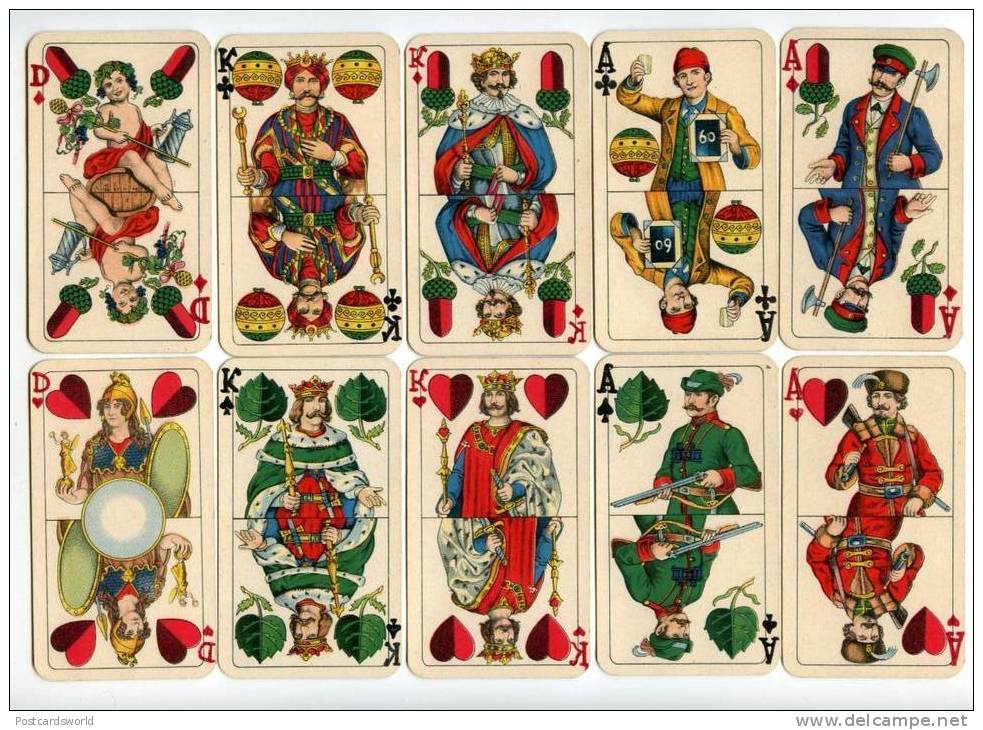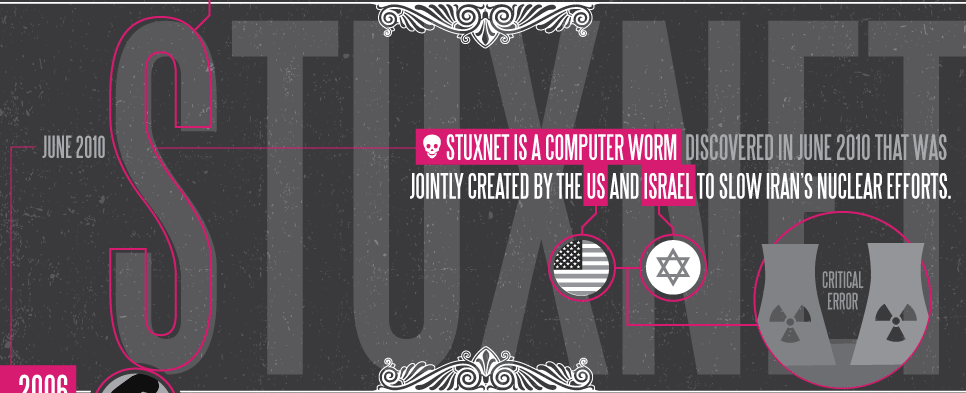For millenia, cultures all over the world have relied on the graphic arts to communicate. That’s right, graphic design came before any sort of written (sometimes even spoken) language. But chances are you already knew that. Ever heard of cave art that uses pictures to describe the terrain of the land or the hunt? The truth is, design not only reflects the ways of the world, but also influences it.
Social phenomenons revolving around art and design are a common occurrence and often leave a big impact on society. The ebb and flow of time can be seen directly in the styles of arts and design that emerge from it.
Playing Cards

Vintage Austrian playing cards. (credit)
Playing cards are good example of this. Generally believed to have been invented in China, playing cards date back to the 9th century. The designs of these cards differed greatly from region to region, depicting classic Islamic symbols, to local rulers, to great kings and queens. Once traditional playing cards made their way to Europe in the 14th century the design was again changed to represent a more European way of life. Playing cards from France once held a likeness of Anne, Duchess of Brittany holding her coat of arms that represented the union of France and Brittany.
Egyptian Hieroglyphs

Wall illustration of Mentuhotep the II, 11th dynasty Egyptian ruler. (credit)
Ancient Egyptian hieroglyphs (not to be confused with hieroglyphics, which is an adjective) are an example where illustrations were able to tell a story better than text would. Hieroglyphs, meaning “god’s words” were the formal “writing” style that used symbols to represent words and letters. Emerging from the preliterate era of Egypt dating back to 4000 BC, hieroglyphs were a unique but widely ubiquitous method of communication among Egyptians. As it spread even farther, more simplified and casual versions called demotic script were developed. Adopting local colloquial terms and phrases, this became the writing of the average Egyptian Joe. During Alexander the Great’s conquest of Egypt, hieroglyphs were still widely used as Egyptians were reluctant to take on the customs of the foreign ruling culture.
Vintage Propaganda

A literal infographic. (credit)
Propaganda was perhaps one of the first incarnations of modern infographics. While propaganda isn’t a new method of warfare and crowd-control, what we know as propaganda today was shaped greatly by European countries in the 19th and 20th centuries. The expert pairing of eye grabbing graphics and (mis)information appealed so greatly to the masses that it inspired it’s own art form. Graphic arts would never be the same after propaganda posters became vogue, and thanks to quickly evolving printing methods, leaflets and posters were able to circulate just as fast as a viral YouTube video would.
Modern Day

Stuxnet Worm infographic made by yours truly.
Today, infographics are slightly less sinster in motive. Catering to a generation that doesn’t want ads thrown in their faces, infographics tell a story to “sell” a product. Make no mistake, infographics are not commercials, but they can have commercial value. People don’t want to be talked down to, we know we’re better than that. Infographic create a great medium for displaying information, opening up conversation, and getting a point across. Whether it’s technical jargon or full of cat pictures, there is value.
People who can create good infographics are the renaissance men of our time. Blending design with meaningful content takes skill and dedication. Churning out a piece that people will really want to read isn’t easy; if it were easy, everyone would do it. A piece of graphic art can take a reader on a fascinating journey through the most mundane subjects. It can deliver bad news in a beautiful way. It can shock, disturb, and even change a person. A good design can take the plain and turn it into a masterpiece. In short, an infographic can change the world.